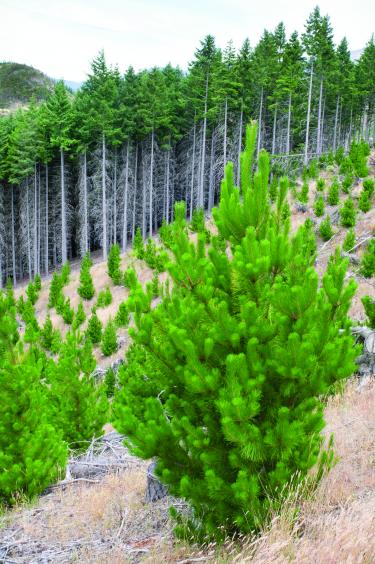How to Choose Trees for Your Land
Restoration gives you a chance to build a healthy ecosystem and a natural disaster-resistant forest from the ground up.
The first step in doing that is taking stock of what you have. Understanding your soil, terrain, climate and vegetation will help you find the right tree species for your land and your goals.
What to look for when assessing your land:
Soil texture, depth and drainage are major factors in selecting the right species for your land.
- Some trees grow best with a certain soil pH. Pines, for instance, like acidic soils more than hardwoods. Make sure to determine how acidic, neutral or basic your soil is.
- Find out which areas on your site have silt, clay and sandy soils. These soil types favor different tree species.
- Soil depth should also be measured, as some trees grow deeper root systems and need to dig further into the soil than others. Make a note of rocky or compacted soils that are hard to penetrate and will limit root growth.
- Soggy, saturated soils may have insufficient oxygen, and that can kill roots. Make sure you know where your water table is.
Terrain or topography—the layout of your land’s high and low areas—also factor into tree selection.
- Slopes tend to have shallower soil, see more sun and hold less water, so drought-tolerant and disease- and fire-resistant trees do best there.
- Floodplains and stream banks have deeper soil that holds more water and sees more shade. Trees in these areas will need to be more tolerant of floods and shade.
Climate is a key factor, as trees are very sensitive to average temperatures and weather conditions on your site.
- Find out your site’s patterns of precipitation, including annual amounts of rain and snow and how they’re spread out through the seasons.
- Determine your average and extreme temperatures throughout the year.
- Figure out how frequently your site faces the risks of flooding, drought, tornadoes, hurricanes and other climate disturbances. Some tree species have adapted to these disturbances and will more readily recover from them.
Vegetation can clue you in to which tree species would fare best on your land, and what their competition will be.
- The trees best adapted to your site are usually the ones that are already there. So take the time to visit healthy surrounding areas or to research your site’s history, and consider native species whenever possible.
- Find out which pest insects, invasive species and plant diseases are common in your area.
Your goals are the last piece in this puzzle—they can narrow your focus when choosing a tree species for your restoration project. Ask yourself if you want to
- Create more wildlife cover or habitat
- Grow food or produce lumber with your trees
- Stabilize damaged soils
- All of the above
County survey maps, soil surveys, historical records and your own samples will give you the information you need to complete your assessment. [Getting professional help](link to “More Resources for Restoration” subpage) can also make assessing your property a little easier.
With a clear picture of the conditions on your property and your goals for your trees, you and your forester can develop a list of tree species that would work for you.
Once you’ve chosen the right trees, you’ll need to plant them, and there are some dos and don’ts to keep in mind at planting time.
How can I get more tips?
It’s simple! Enter your email below.

